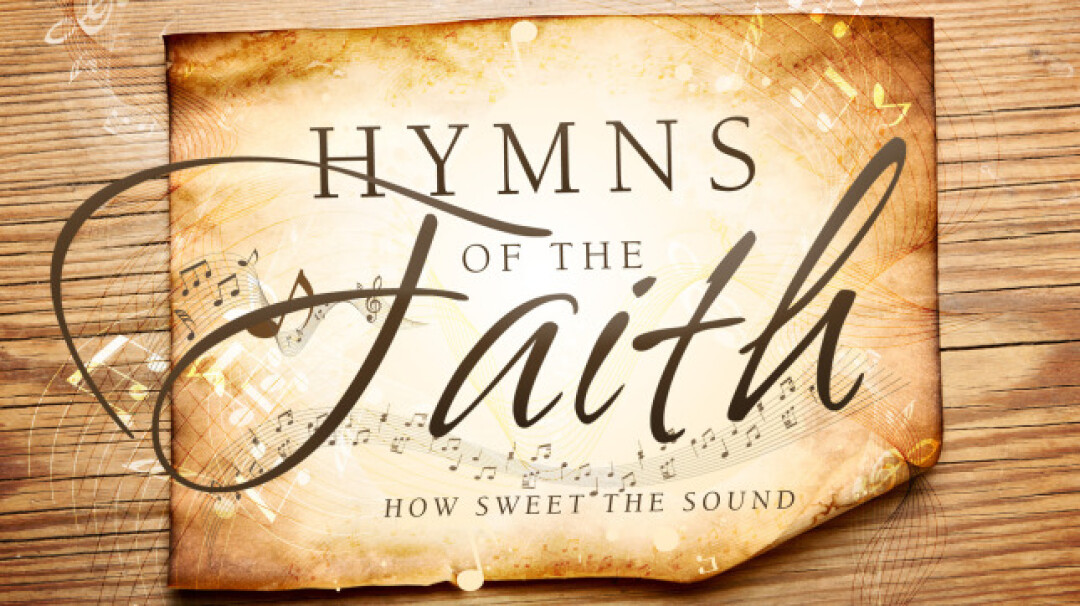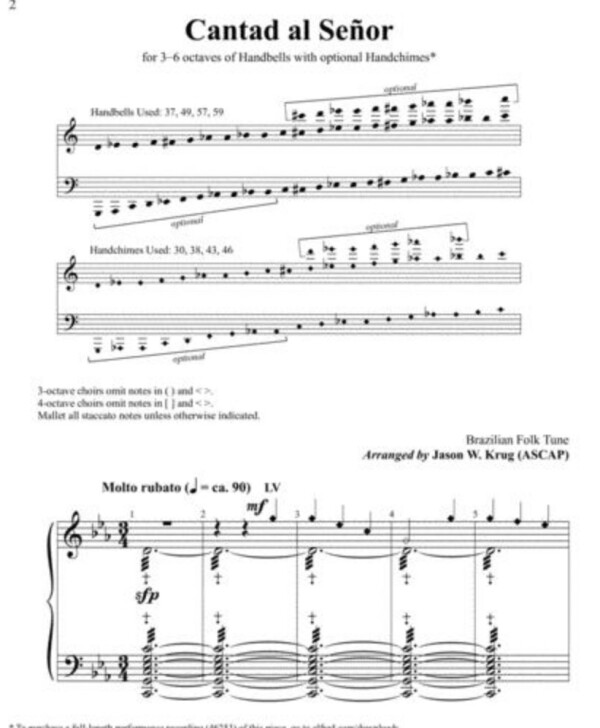

The Pender Joy Ringers, directed by Brian Stevenson played “Cantad al Señor” by Jason Krug during the Traditional Worship at Pender UMC on June 12, 2022, Music Appreciation Sunday.
Jason Krug’s evocative take on the Brazilian folk hymn features malleted handbells, LV ringing, and tempo changes. With each progressive stanza the excitement build to a thrilling conclusion. 171 measures. Keys of c minor and d minor.
“Cantai ao Senhor” (Cantad al Señor/O Sing to the Lord)
Traditional Brazilian folk song;
Hymnary.org
Portuguese:
Cantai ao Senhor um cantico novo,
cantai ao Senhor um cantico novo,
cantai ao Senhor um cantico novo,
cantai ao Senhor, cantai ao Senhor.
English:
O sing to the Lord, O sing God a new song,
O sing to the Lord, O sing God a new song,
O sing to the Lord, O sing God a new song,
O sing to the Lord, O sing to the Lord.Spanish:
Cantad al Señor un cántico nuevo,
cantad al Señor un cántico nuevo,
cantad al Señor un cántico nuevo,
cantad al Señor, cantad al Señor
Additional verses in Spanish:
2 El es creador y dueño de todo,
el es creador y dueño de todo,
el es creador y dueño de todo,
cantad al Señor, cantad al Señor.
3 Cantad a Jesús porque el es digno,
cantad a Jesús porque el es digno,
cantad a Jesús porque el es digno,
cantad al Señor, cantad al Señor.
4 Es el quien nos dio su Espíritu Santo,
es el quien nos dio su Espíritu Santo,
es el quien nos dio su Espíritu Santo,
cantad al Señor, cantad al Señor.
5 Cantad al Señor, “¡Amén, aleluya!”
cantad al Señor, “¡Amén, aleluya!”
cantad al Señor, “¡Amén, aleluya!”
Cantad al Señor, cantad al Señor.
English and Spanish texts © 1986 Gerhard M. Cartford (1923-2016), admin. by Augsburg Fortress.
Many versions exist of this strong, angular hymn that boldly encourages us to sing a new song to God. Originally in Portuguese, this hymn of unknown authorship comes to us from Brazil. As it has made its way to the USA, most likely through conferences supported by the World Council of churches and noted leaders such as Pablo Sosa from Argentina, it is now translated into several languages and is included in over 22 hymnals, including USA denominational hymnals and songbooks.
The message of this hymn clearly alludes to Psalm 98: “O sing to the Lord a new song… Make a joyful noise to the Lord, all the earth; break forth into joyous song and sing praises.” The original first stanza states only that in a declamatory manner, repeating the same text over and over as the melody moves sequentially. The subsequent verses in Spanish were added on and gives this hymn a Trinitarian purpose as the verses center on God as Creator, Jesus who is worthy, and the gift of the Holy Spirit. The final verse is an admonition once more to “Sing to God,” followed by “Amen” and ”Aleluya.”
Gerhard Cartford, who supplied the additional verses in Spanish, was instrumental in the development of the Lutheran Book of Worship (1978). He also translated some hymns for Libro de Liturgia y Cántico and helped edit this hymnal.
“Cantai ao Senhor” can be sung as a gathering song for worship, led by a choir or sung by the whole congregation. It is short and melodic and therefore lends itself to being sung several times. This Brazilian folk melody should be sung with a sense of a strong waltz feel, accentuating the first beat of each measure. Instruments can include maracas, claves, and guiros on beats 2 and 3, and instruments such as guitar, drums and piano should reinforce the first beat of each measure. Allow drums or percussion instruments to play for 2-3 measures after each verse to keep the rhythmic energy moving forward. This song can also be used as a psalm response and as a musical segue from one liturgical action to another.
Adapted from https://www.umcdiscipleship.org/resources/history-of-hymns-cantai-ao-senhor-cantad-al-senor-o-sing-to-the-lord


